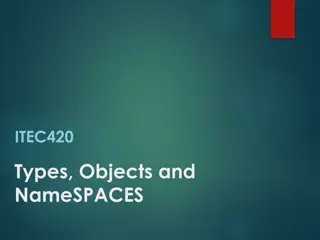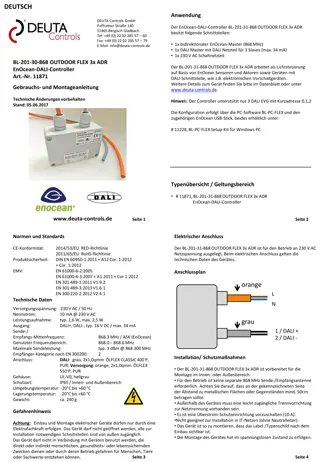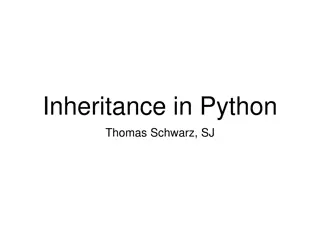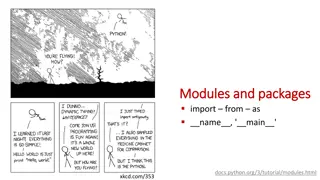
Characteristics of Good Code in Computer Science
Explore the 8 key characteristics of good code in computer science, including readability, adaptability, efficiency, maintainability, well-structured design, reliability, adherence to standards, and recognition by peers. Understand the importance of writing code that is easy to understand, modify, efficient, maintain, and follow industry standards to foster a positive reputation within the programming community.
Download Presentation

Please find below an Image/Link to download the presentation.
The content on the website is provided AS IS for your information and personal use only. It may not be sold, licensed, or shared on other websites without obtaining consent from the author. If you encounter any issues during the download, it is possible that the publisher has removed the file from their server.
You are allowed to download the files provided on this website for personal or commercial use, subject to the condition that they are used lawfully. All files are the property of their respective owners.
The content on the website is provided AS IS for your information and personal use only. It may not be sold, licensed, or shared on other websites without obtaining consent from the author.
E N D
Presentation Transcript
CMSC201 Computer Science I for Majors Lecture 16 Classes and Modules Prof. Katherine Gibson www.umbc.edu Based on slides from the book author, and previous iterations of the course
Last Class We Covered Review of Functions Code Design Readability Adaptability Top-Down Design Modular Development 2 www.umbc.edu
Any Questions from Last Time? www.umbc.edu
Todays Objectives To reinforce what exactly it means to write good quality code To learn more about importing To better understand the usefulness of modules To learn what a class is, and its various parts To cover vocabulary related to classes To be able to create instances of a class 4 www.umbc.edu
Good Code If you were to ask a dozen programmers what it means to write good code, you would get a different answer from each What are some characteristics that we have discussed that help you write good code? 5 www.umbc.edu
8 Characteristics of Good Code 1. Readability As we previously discussed, writing code that is easy to understand what it is doing 2. Adaptability (or Extensibility) Relates to how easy it is to change conditions or add features or functionality to the code 3. Efficiency Clean code is fast code 6 www.umbc.edu From: http://www.codeexcellence.com/2012/05/8-must-have-characteristics-for-writing-quality-code/
8 Characteristics of Good Code 4. Maintainability Write it for other people to read! 5. Well Structured How well do the different parts of the code work together? Is there a clear flow to the program? 6. Reliability Code is stable and causes little downtime 7 www.umbc.edu From: http://www.codeexcellence.com/2012/05/8-must-have-characteristics-for-writing-quality-code/
8 Characteristics of Good Code 7. Follows Standards Code follows a set of guidelines, rules and regulations that are set by the organization 8. Regarded by Peers Good programmers know good code You know you are doing a good programming job when your peers have good things to say about your code and prefer to copy and paste from your programs 8 From: http://www.codeexcellence.com/2012/05/8-must-have-characteristics-for-writing-quality-code/ www.umbc.edu
Importing and Modules www.umbc.edu
Reusing Code If we take the time to write a good function, we might want to reuse it later! It should have the characteristics of good code Clear, efficient, well-commented, and reliable Should be extensively tested to ensure that it performs exactly as we want it to Reusing bad code causes problems in new places! 10 www.umbc.edu
Modules A module is a Python file that contains definitions (of functions) and other statements Named just like a regular Python file: myModule.py Modules allow us to easily reuse parts of our code that may be generally useful Functions like isPrime(num) or getValidInput(min, max) 11 www.umbc.edu
Importing Modules To use a module, we must first import it There are three different ways of importing: import somefile from somefile import * from somefile import className The difference is what gets imported from the file and what name refers to it after importing 12 www.umbc.edu
import In Lab 9, when we practiced using pdb (Python debugger), we used the import command import pdb This command imports the entire pdb.py file Every single thing in the file is now available This includes functions, classes, constants, etc. 13 www.umbc.edu
import To use the things we ve imported this way, we need to append the filename and a period to the front of its name ( myModule. ) To access a function called myFunction: myModule.myFunction(34) To access a class method: myModule.myClass.classMethod() 14 www.umbc.edu
from someFile import * Again, everything in the file someFile.py gets imported (we gain access to it) The star (*) means we import every single thing from someFile.py Be careful! Using this import command can easily overwrite an existing function or variable 15 www.umbc.edu
from someFile import * When we use this import, if we want to refer to anything, we can just use its name We no longer need to use someFile. in front of the things we want to access myFunction(34) myClass.classMethod() These things are now in the current namespace 16 www.umbc.edu
from someFile import X Only the item X in someFile.py is imported After importing X, you can refer to it by using just its name (it s in the current namespace) But again, be careful! This would overwrite anything already defined in the current namespace that is also called X 17 www.umbc.edu
from someFile import X from myModule import myClass We have imported this class and its methods myClass.classMethod() But not the other things in myModule.py myFunction(34) (not imported) We can import multiple things using commas: from myModule import thing1, thing2 18 www.umbc.edu
Where to Import From? Where does Python look for module files? In the current directory In a list of pre-defined directories The list of directories where Python will look for files to be imported is called sys.path To add a directory to this list, append it sys.path.append('/my/new/path') 19 www.umbc.edu
The sys.path Variable The path variable is stored inside the sys module (the system module) We can see what it contains like so: >>> import sys >>> sys.path this means to look in the current directory ['', '/opt/rh/python33/root/usr/lib64/python33.zip', '/opt/rh/python33/root/usr/lib64/python3.3', '/opt/rh/python33/root/usr/lib64/python3.3/plat-linux', '/opt/rh/python33/root/usr/lib64/python3.3/lib-dynload', '/opt/rh/python33/root/usr/lib64/python3.3/site-packages', '/opt/rh/python33/root/usr/lib/python3.3/site-packages'] 20 www.umbc.edu
Object Oriented Programming: Defining Classes www.umbc.edu
Classes A class is a special data type which defines how to build a certain kind of object. The class also stores some data items that are shared by all the instances of this class Classes are blueprints for something Instances are objects that are created which follow the definition given inside of the class www.umbc.edu
Classes In general, classes contain two things: 1. Attributes of an object (data members) Usually variables describing the thing 2. Things that the object can do (methods) Usually functions describing the action www.umbc.edu
Class Parts Data member: A class variable or instance variable that holds data associated with a class and its objects. Method: A special kind of function that is defined in a class definition. www.umbc.edu
Instances of a Class Object: A unique instance of a data structure that's defined by its class. An object comprises both data members (class variables and instance variables) and methods. www.umbc.edu
Class Description If a class describes a thing, we can think about it in terms of English Object -> Noun Attribute -> Adjective Method (Function) -> Verb www.umbc.edu
Class to build dogs Class Example Characteristic of dog class Dog: def __init__(self, name): self.name = name self.tricks = [] # creates a new empty list for each dog def add_trick(self, trick): self.tricks.append(trick) Method (function) to add tricks >>> d = Dog('Fido') >>> e = Dog('Buddy') >>> d.add_trick('roll over') >>> e.add_trick('play dead') >>> d.tricks ['roll over'] >>> e.tricks ['play dead'] Creating a new dog named Fido www.umbc.edu From: https://docs.python.org/2/tutorial/classes.html
Class Example class Dog: def __init__(self, name): self.name = name self.tricks = [] # creates a new empty list for each dog Creates an instance of dog (called an object) def add_trick(self, trick): self.tricks.append(trick) >>> d = Dog('Fido') >>> e = Dog('Buddy') >>> d.add_trick('roll over') >>> e.add_trick('play dead') >>> d.tricks ['roll over'] >>> e.tricks ['play dead'] Refer to Fido as d from then on Add a trick to Fido called roll over www.umbc.edu From: https://docs.python.org/2/tutorial/classes.html
Defining a Class Instances are objects that are created which follow the definition given inside of the class Python doesn t use separate class interface definitions as in some languages You just define the class and then use it www.umbc.edu
Everything an Object? Everything in Python is really an object. We ve seen hints of this already hello .upper() list3.append( a ) New object classes can easily be defined in addition to these built-in data-types. In fact, programming in Python is typically done in an object-oriented fashion. www.umbc.edu
Methods in Classes Define a method in a class by including function definitions within the scope of the class block There must be a special first argument selfin all of method definitions which gets bound to the calling instance There is also usually a special method called __init__in most classes We ll talk about both later www.umbc.edu
Class Example student class student: def __init__(self, n, a): self.full_name = n self.age = a def get_age(self): return self.age www.umbc.edu
Using Class Student Create new student object (a) with name John , age 19 def main(): a = student("John", 19) print(a.full_name) print(a.get_age()) main() bash-4.1$ python class_student.py John 19 bash-4.1$ Print an attribute of the student Call a method of student Output www.umbc.edu
Any Other Questions? www.umbc.edu
Announcements Midterm Survey (on Blackboard) Due by Friday, November 6th at 8:59:59 PM Project 1 is out Due by Tuesday, November 17th at 8:59:59 PM Do NOT procrastinate! Next Class: More about Classes 35 www.umbc.edu






















